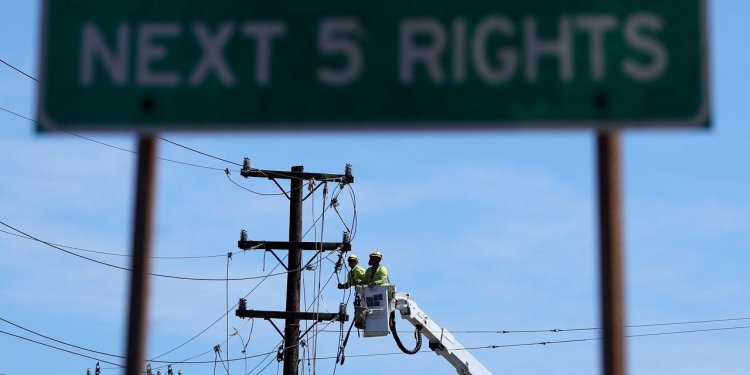Maui’s Fires and the Electric Grid
Utilities are spending more on the green energy transition than on resilience. By The Editorial Board Aug. 18, 2023 7:01 pm ET Hawaii Electric workers make repairs to electrical lines on Thursday. Photo: Justin Sullivan/Getty Images The deadly fires in Maui last week are still being investigated, and there may have been more than one contributor. But one culprit that seems to be emerging is the tradeoff the local utility had to navigate between power grid safety and the government-mandated green energy transition. Video footage points to fallen power lines as a possible cause of the deadly fires. Hawaiian Electri


Hawaii Electric workers make repairs to electrical lines on Thursday.
Photo: Justin Sullivan/Getty Images
The deadly fires in Maui last week are still being investigated, and there may have been more than one contributor. But one culprit that seems to be emerging is the tradeoff the local utility had to navigate between power grid safety and the government-mandated green energy transition.
Video footage points to fallen power lines as a possible cause of the deadly fires. Hawaiian Electric’s bonds and stocks have sold off this week as investors worry that the utility will be liable for fire damage.
If Hawaiian Electric’s lines did ignite the fires, it would echo the problems of PG&E, the California utility that filed for Chapter 11 bankruptcy in 2019 after getting sued for tens of billions of dollars for damages from fires caused by its equipment. The 2018 Camp Fire killed 84 people and razed the town of Paradise.
What both utilities have in common is that they prioritized growing renewable power to meet government mandates over hardening their systems and reducing fire risk. In 2015 Hawaii lawmakers required that 100% of the state’s electricity come from renewable sources by 2045. California and some other states followed with similar mandates.
Hawaii’s mandate was an especially tall order since only about 20% of its power in 2015 came from renewables. The islands lack large amounts of empty land to build solar and wind. They also lack natural-gas power that can ramp up quickly to back them up. Most of Hawaii’s power was derived from oil and coal.
To meet the government mandate, Hawaiian Electric embarked on a rapid renewable build-out, which involved heavily subsidizing rooftop solar and batteries and contracting for large-scale renewables at elevated prices. Oil can be an expensive fuel source, but decommissioning fossil-fuel plants prematurely wastes sunk capital.
Every dollar the utility spent on subsidizing solar and connecting renewables to the grid was one less dollar available for strengthening equipment and removing combustible brush. Despite rising fire risk from non-native grass, Hawaiian Electric spent less than $245,000 on wildfire projects on the island of Maui between 2019 and 2022.
Not until last year did the utility seek state approval to raise rates for wildfire-safety improvements, which it still hasn’t received. “Looking back with hindsight, the business opportunities were on the generation side, and the utility was going out for bid with all these big renewable-energy projects,” former Maui County Energy Commissioner Doug McLeod told the Journal.
Hawaiian Electric now generates about 40% of power from renewables and at times produces more solar power than the grid can handle. Grid upgrades required to connect renewables and balance their intermittent flows can divert scarce capital from system improvements needed to withstand physical stress, such as from heavy winds.
A fraying electric grid is a nationwide problem. Consultants at Marsh McLennan estimate that more than $700 billion will need to be spent to replace aging transmission lines and maintain grid reliability. Sixty percent of U.S. distribution lines have surpassed their 50-year life expectancy. The average age of large power transformers is 40 years, twice their planned life span.
Grid upgrades to achieve the net-zero promised land will cost another $2.5 trillion by 2050, according to a Princeton University study. Something will invariably give. And as we’ve seen in California and Hawaii, it may be safety.
What's Your Reaction?













